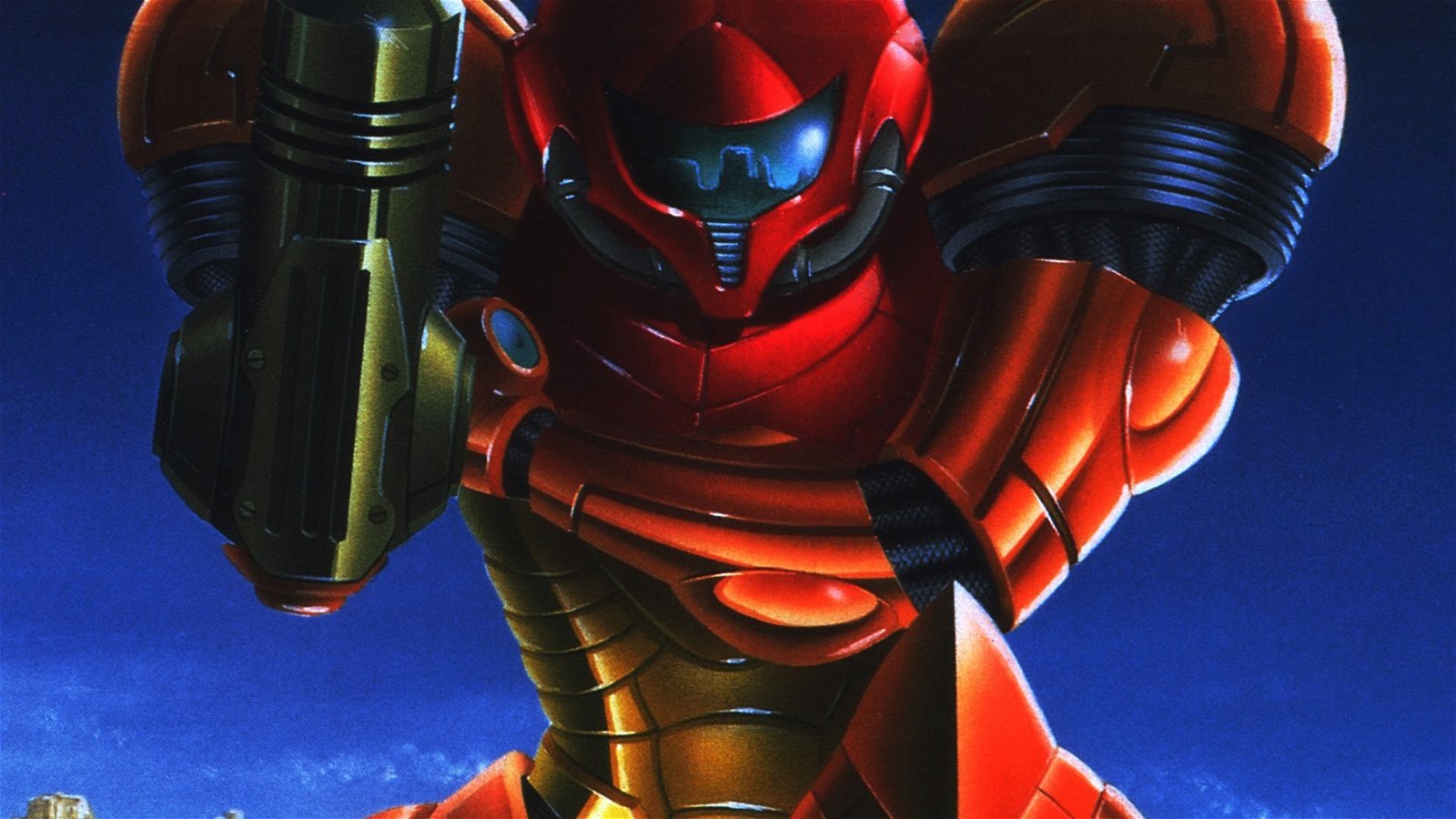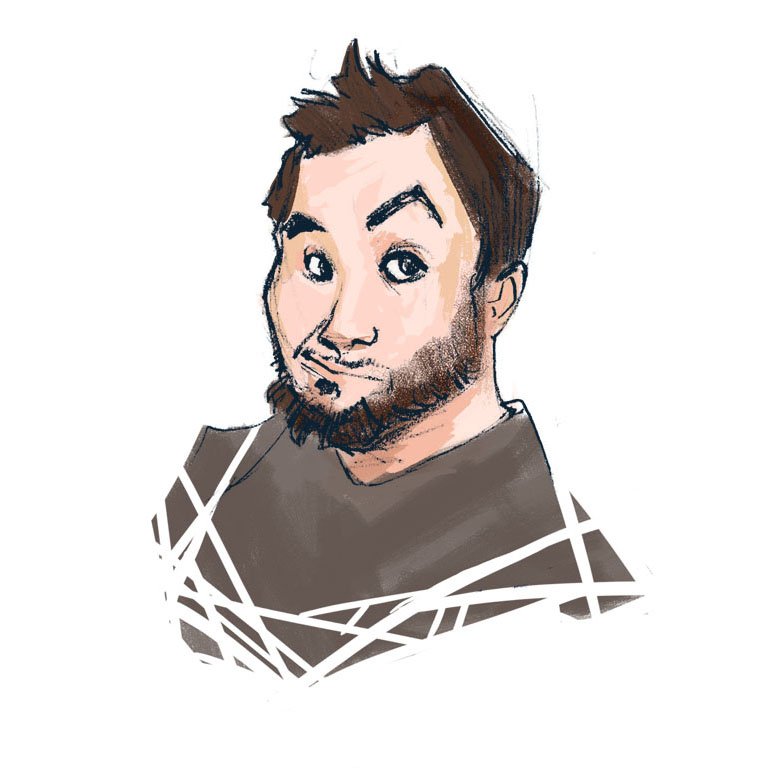One of the biggest reveals from E3 2017 was the announcement that Nintendo is releasing two Metroid games.
Though one of the titles, Metroid: Samus Returns was kept off the main Nintendo Spotlight stream, it was the only title in the series that was ready to play at the show in Nintendo’s booth. Metroid: Samus Returns takes the map and original concept of the Game Boy classic Metroid II: Return of Samus but adds new power-ups, 360 degree aiming, and a brand-new melee counter, making it seem like an almost new title altogether.
Nintendo EAD in conjunction with MercurySteam is working on the title with series veteran Yoshio Sakamoto at the helm. Though he’s been with the series since its inception, working as producer in Super Metroid, he never worked on Metroid II, making this a new venture for the industry veteran. CGMagazine had the opportunity to speak with Sakamoto about his upcoming project, presenting the title to Nintendo, and balancing the old with the new.
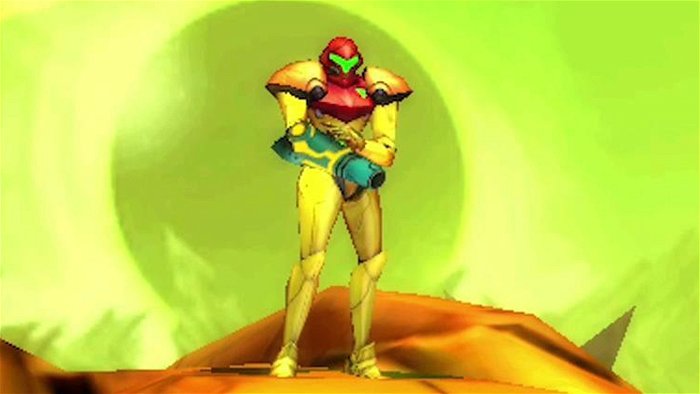
CGMAGAZINE: In the reveal trailer, you discussed how your Metroid: Samus Returns is a new game but built off of the original Metroid II. Can you discuss what that means?
Yoshio Sakamoto: First of all, the map… it’s based upon the one in Metroid II, and it contains all of the abilities Samus had in Metroid II. We have all of the previous abilities, plus a few new ones, new visuals, and utilizing the technology of the 3DS we added more excitement and more thrills, we really have improved upon what was the foundation that existed in Metroid II.
CGMAGAZINE: So Metroid II is a kind of a stepping stone to show off these ideas you have right?
Sakamoto: Yeah, sure that’s a good way to put it. Yes, We took that foundation from Metroid II, and then we laid new things upon it as you just said. There are some new enemies that you will be encountering that are designed [for their] motions and how they react with Samus that really fit the environment.
CGMAGAZINE: It’s been the while since I played Metroid II, does the 360 degree shooting control have an effect on the map in terms of like placement or even how wide the physical space is to move around in?
Sakamoto: I think in terms of enemy placement, yeah it is a factor on where we placed [them]. We are revisiting this game, so while we are working on the map, there have been some changes as a result of the incorporation of the 360 degrees ability.


CGMAGAZINE: And in terms of the melee counter, the same kind of question with that, later in the game did you try to incorporate more tight corridors so that there’s more tense feeling?
Sakamoto: Yeah I don’t think we consciously looked at reconstructing areas of the map to create spaces where the melee counters will have be used or would be previously used to create tension. But that being said, you know there are a lot of really quick or maybe surprise encounters with enemies and perhaps some of the placement decisions may have been based on “oh! We have this melee counter now.”
CGMAGAZINE: I was wondering if you could talk a bit about working with MercurySteam, and, they have some experience on working with Metroidvania genre. Did their input any effect on gameplay elements in Metroid: Samus Returns.
Sakamoto: I don’t think there is any change in the direction of the game via that collaboration. Personally, my image of the collaborative efforts between MercurySteam and ourselves was that we both brought our experiences and our know how to the table, and we used those to expand upon, and to literally pull out the potential of the Metroid series. So, the direction was pretty much, this is what we want to do, they were just able to do and we were able to expand upon that.
CGMAGAZINE: It’s been a long time since we’ve seen a 2D Metroid game, and in that time since, the Metroidvania genre has completely exploded specifically on the indie scene. With a lot of different ideas coming out from there I was wondering if you’ve been keeping tabs on that, or if you think that was one of the founders of that genre, it’s up to you to kind of push it forward more?
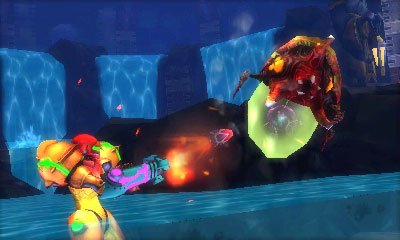
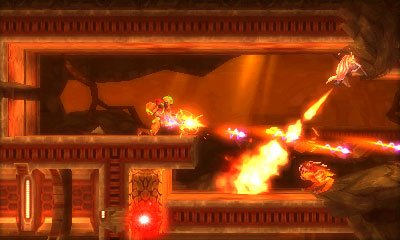
Sakamoto: Yeah I’m well aware of…the abundance [of games in the] the Metroidvania genre. I know there are a lot, but I haven’t played them, it however, one thing I think we’ve learned from that is, there’s a thirst for that genre. People are excited about the genre, and so from a marketing stand point, understanding that this market exists, it’s been helpful to have all of those people clamoring for them. And it really solidified the ability of this desire to creating another 2D Metroid game.
CGMAGAZINE: Could tell me a little bit about the process of making this kind of game come to life? Because it’s been a while since Federation Force or since we‘ve seen anything from Metroid franchise. I’ve read that you had a desire to bring back the 2D style, and you just mentioned that the indie scene verified that there is a desire from players for something like this. I was wondering if you can tell me a little bit about this how you presented this to Nintendo, and how you brought this to life.
Sakamoto: Basically, as we talked about it, it’s been something that’s been in the back of my mind for a long while, and I think at some point you know recognizing that there’s a market for 2D style [Metroidvania] games, from the indie scene, and from other channels as well. Then, looking at Nintendo’s overall strategies in the industry, and, of course, how Metroid is a very important IP for Nintendo. But timing is something that needs to be taken into consideration when we are going do this. So, basically I have this image of what I want to do, there’s a strategy, and then there’s the question of “do I have hardware available for me to bring what I want to life?” In this case Metroid: Samus Returns, the 2DS and 3DS were the platforms we were looking at, and then we first look at the overall industry needs and… [it gave] me the momentum to say “hey look at this thing I have been talking about! Well I think this is the right time.” It’s a much more organic start, rather than some sort of process. And I think this title fulfills all of those conditions. This is the title that hit everything we are looking at.
CGMAGAZINE: OK. So you mentioned that you were looking at the 3DS as your platform of choice. Personally it’s probably my favourite system I own, so I’m happy to see more content for it, but what did you see in the 3DS that complemented this style of game so much more than the Switch?
Sakamoto: We haven’t made a 2D style [Metroid] game for either 2DS or 3DS. With the 3DS, of course we have the analogue stick, and then going back, the entire DS family has two screens, so I just think this is the perfect platform for which I can build the Metroid game. Another thing I think you probably were able to experience, was during your time [with Metroid: Samus Returns], the console’s 3D effect was something that we absolutely couldn’t pass on.
CGMAGAZINE: I noticed focus on action in the little bit of time I played, I don’t know if that was just because I haven’t played Metroid for a really long time but if you know you can introduce a change in the way that one can use Metroid game. I was wondering if that was a conscious decision to make it a little more action heavy than a typical Metroid game.
Sakamoto: Absolutely! There are a lot more abilities than were present in the original Metroid II …we have taken the abilities we had in the main titles and brought it into this game as well. There’s just more that these platforms can do. And of course, we also have the other main camera, which was suggested by our invaluable partner in the production of this title, MercurySteam. That plus some of the new actions that we had added increased the action.
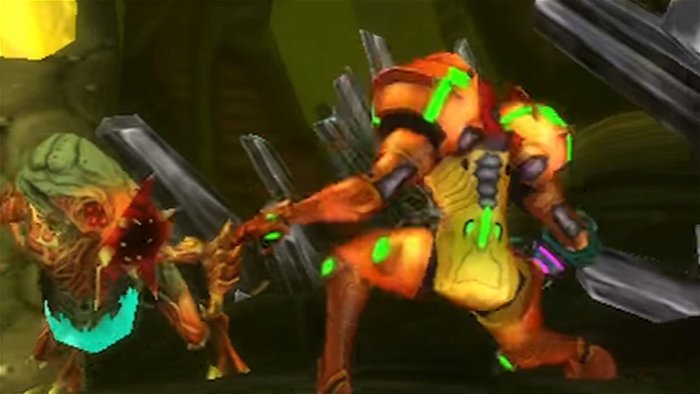
CGMAGAZINE: With pretty much any entry in the Metroid series there’s someone who says “this is my favourite game.” Every developer I’ve talked says that there’s a line that they have to walk between fidelity of the source material and creating a new experience so that people aren’t wasting their time just replaying and rehashing the game. Can you talk a bit about how you’ve managed to strike that balance?
Sakamoto: So, of course, I agree with you, that’s really important thing to do, that balance is very vital to the success of the title, and I believe there are tons of Metroid II fans who really want to play this game we are very conscious of not wanting to create something that will disappoint them as they revisit this title. But I do think the idea of this game was to create something for these existing Metroid II fans and adding new things into it. [It will show that] yeah, it’s your game, but it’s a new experience and you’re going to give it a new vision that’s hopefully, even more, fun and really stimulating. That was something we had to take very seriously but I think we’re able to preserve the essence of the original title and add to it this new stimulus, this new excitement that is going to make them really pleased with it.
